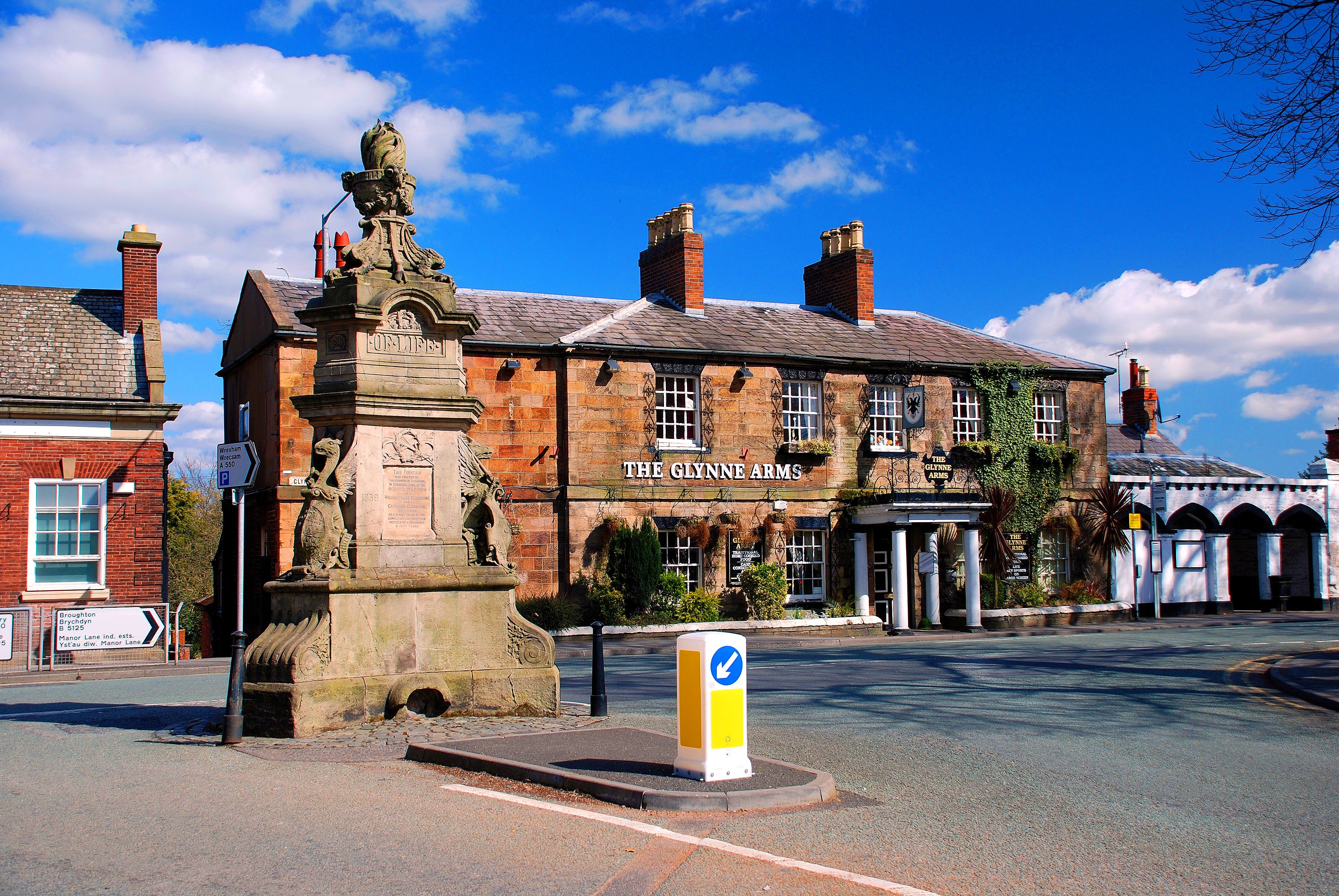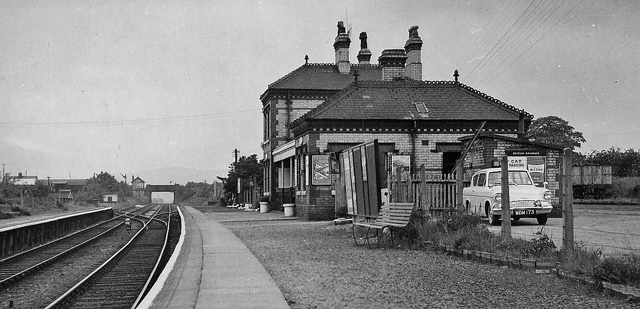|
North Wales And Liverpool Railway
The North Wales and Liverpool Railway (NWLR), was the name given to the joint committee formed to construct a railway between Bidston, on the Wirral Railway and Hawarden on the Manchester, Sheffield and Lincolnshire Railway's (MSLR) Chester & Connah's Quay Railway from Chester to its link with the Wrexham, Mold and Connah's Quay Railway (WMCQR): the committee was between the two latter Railways. When the WMCQR went into receivership in 1897 the MSLR (by then known as the Great Central Railway The Great Central Railway in England was formed when the Manchester, Sheffield and Lincolnshire Railway changed its name in 1897, anticipating the opening in 1899 of its London Extension. On 1 January 1923, the company was grouped into the ...) bought the combined WMCQR and the Bidston extension. The Committee was dissolved in 1904. The line now forms the Northern part of the Borderlands Line. References External linksDisused Stations Historic transport in Merseyside Early ... [...More Info...] [...Related Items...] OR: [Wikipedia] [Google] [Baidu] |
Bidston
Bidston is a village, a parish and a suburb of Birkenhead, on the Wirral Peninsula, in the modern county of Merseyside. The area is a mixture of the well-preserved Bidston Village, Bidston Hill, a modern housing estate, and the Bidston Moss nature reserve, industrial estate and retail park. Administratively, it is also a ward of the Metropolitan Borough of Wirral. Before local government reorganisation on 1 April 1974, it was part of the County Borough of Birkenhead, within the geographical county of Cheshire. At the 2001 Census, the population of Bidston was 10,446, consisting of 4,725 males and 5,721 females. By the time of the 2011 Census the electoral ward was called Bidston and St. James (St James is part of Bidston and not a separate locality). This ward includes Beechwood to the south of Bidston and extends into much of Birkenhead to the east, including all of the south side of the Great Float. The total population of this ward at this Census was 15,216 of which 7,117 ... [...More Info...] [...Related Items...] OR: [Wikipedia] [Google] [Baidu] |
Wirral Railway
The Wirral Railway was a railway network in the northern part of the Wirral Peninsula, England. Its route was from Birkenhead Park in the east of the Wirral to West Kirby in the west. A branch off this line at Bidston went north to Secombe and New Brighton. It was incorporated in 1863 as the Hoylake Railway, running from Hoylake to Birkenhead Docks. After changes of name and of ownership, it was purchased by the Wirral Railway Company Limited in 1884. The network was extended to West Kirby, New Brighton, and Seacombe, and to Birkenhead Park station where it joined the Mersey Railway, enabling through trains through the Mersey Railway Tunnel to Liverpool. In the 1923 grouping the Wirral company became part of the London, Midland and Scottish Railway, which electrified the line (except the Seacombe branch) in 1938, allowing passenger services to be integrated with the Liverpool urban system. Most of the Wirral Railway network is still in use today as part of the Wirral Line of t ... [...More Info...] [...Related Items...] OR: [Wikipedia] [Google] [Baidu] |
Hawarden
Hawarden (; cy, Penarlâg) is a village, community (Wales), community and Wards and electoral divisions of the United Kingdom, electoral ward in Flintshire, Wales. It is part of the Deeside conurbation on the Wales-England border and is home to Hawarden Castle (medieval), Hawarden Castle. In the 2011 United Kingdom census, 2011 census the ward of the same name had a population of 1,887, whereas the community of the same name, which also includes Ewloe (which also has a castle) Mancot and Aston, Flintshire, Aston had a population of 13,920. The scenic wooded Hawarden Park abuts the nucleated village, clustered settlement in the south. Hawarden Bridge consists of distribution and industrial business premises beyond Shotton, Flintshire, Shotton/Queensferry, Flintshire, Queensferry and the River Dee (Wales), Dee. The west of the main street is called The Highway, its start marked by the crossroads with a fountain in the middle, near which are public houses, some with restaurants. ... [...More Info...] [...Related Items...] OR: [Wikipedia] [Google] [Baidu] |
Manchester, Sheffield And Lincolnshire Railway
The Manchester, Sheffield and Lincolnshire Railway (MS&LR) was formed in 1847 when the Sheffield, Ashton-under-Lyne and Manchester Railway joined with authorised but unbuilt railway companies, forming a proposed network from Manchester to Grimsby. It pursued a policy of expanding its area of influence, especially in reaching west to Liverpool, which it ultimately did through the medium of the Cheshire Lines Committee network in joint partnership with the Great Northern Railway and the Midland Railway. Its dominant traffic was minerals, chiefly coal, and the main market was in London and the south of England. It was dependent on other lines to convey traffic southward. The London and North Western Railway was an exceptionally hostile partner, and in later years the MS&LR allied itself with the Great Northern Railway. Passenger traffic, especially around Manchester, was also an important business area, and well-patronised express trains to London were run in collaboration with th ... [...More Info...] [...Related Items...] OR: [Wikipedia] [Google] [Baidu] |
Chester & Connah's Quay Railway
The Chester & Connah's Quay Railway ran from Chester Northgate in Chester, Cheshire, England to Shotton, Flintshire, Wales. It was in use for its full length from 1890 to 1992. At Dee Marsh Junction it connected with the North Wales and Liverpool Railway. It then crossed the River Dee by means of Hawarden Bridge before joining the Wrexham, Mold and Connah's Quay Railway at Shotton. The line today Open portion The only section of the Chester & Connah's Quay Railway which remains in use is between Dee Marsh Junction and Shotton, forming part of the Borderlands Line. Closed portion The rest of the line closed to passenger trains in 1968, but remained open to freight trains until 1992. Even though steelmaking operations at the British Steel plant at Shotton ceased in March 1980, freight continued to use the double-tracked line until 20 April 1984. Goods services resumed on a single-track line on 31 August 1986 before final closure in June 1992. This was precipitated by the ... [...More Info...] [...Related Items...] OR: [Wikipedia] [Google] [Baidu] |
Chester
Chester is a cathedral city and the county town of Cheshire, England. It is located on the River Dee, close to the English–Welsh border. With a population of 79,645 in 2011,"2011 Census results: People and Population Profile: Chester Locality"; downloaded froCheshire West and Chester: Population Profiles, 17 May 2019 it is the most populous settlement of Cheshire West and Chester (a unitary authority which had a population of 329,608 in 2011) and serves as its administrative headquarters. It is also the historic county town of Cheshire and the second-largest settlement in Cheshire after Warrington. Chester was founded in 79 AD as a "castrum" or Roman fort with the name Deva Victrix during the reign of Emperor Vespasian. One of the main army camps in Roman Britain, Deva later became a major civilian settlement. In 689, King Æthelred of Mercia founded the Minster Church of West Mercia, which later became Chester's first cathedral, and the Angles extended and strengthene ... [...More Info...] [...Related Items...] OR: [Wikipedia] [Google] [Baidu] |
Wrexham, Mold And Connah's Quay Railway
The Buckley Railway was opened from Buckley to a connection with the Chester to Holyhead main line on 7 June 1862, to convey coal and finished brickworks products from the Buckley area. Numerous short tramroads had existed in the area from the 1700s. The line was steeply graded (1 in 28 between Northop Hall and Connah's Quay) and sharply curved. The Wrexham, Mold and Connah's Quay Railway (WM&CQR) was incorporated in 1862 to build a line from Wrexham to Buckley, continuing to the C&HR main line via the Buckley Railway, which it joined at Ashton's Branch Junction. It later bought the Buckley Railway. The WM&CQR had plans for extensions but was unable to raise money to bring all of them into being. Short branches to mineral workings around Brymbo were opened. The WM&CQR allied itself with the Manchester, Sheffield and Lincolnshire Railway (later the Great Central Railway) which provided the finance to cross the River Dee and connect to Chester and its own system over the Cheshi ... [...More Info...] [...Related Items...] OR: [Wikipedia] [Google] [Baidu] |
Great Central Railway
The Great Central Railway in England was formed when the Manchester, Sheffield and Lincolnshire Railway changed its name in 1897, anticipating the opening in 1899 of its London Extension. On 1 January 1923, the company was grouped into the London and North Eastern Railway. History New name On assuming its new title, the Great Central Railway had a main line from Manchester London Road Station via , Sheffield Victoria, and Grimsby to . A second line left the line at Penistone and served , and Scunthorpe, before rejoining the Grimsby line at . Other lines linked Sheffield to Barnsley (via ) and Doncaster (via Rotherham) and also and Wrawby Junction. Branch lines in north Lincolnshire ran to Barton-upon-Humber and New Holland and served ironstone quarries in the Scunthorpe area. In the Manchester area, lines ran to Stalybridge and Glossop. In the 1890s, the MS&LR began constructing its Derbyshire lines, the first part of its push southwards. Leaving its east–west mai ... [...More Info...] [...Related Items...] OR: [Wikipedia] [Google] [Baidu] |
Historic Transport In Merseyside
History (derived ) is the systematic study and the documentation of the human activity. The time period of event before the invention of writing systems is considered prehistory. "History" is an umbrella term comprising past events as well as the memory, discovery, collection, organization, presentation, and interpretation of these events. Historians seek knowledge of the past using historical sources such as written documents, oral accounts, art and material artifacts, and ecological markers. History is not complete and still has debatable mysteries. History is also an academic discipline which uses narrative to describe, examine, question, and analyze past events, and investigate their patterns of cause and effect. Historians often debate which narrative best explains an event, as well as the significance of different causes and effects. Historians also debate the nature of history as an end in itself, as well as its usefulness to give perspective on the problems of the p ... [...More Info...] [...Related Items...] OR: [Wikipedia] [Google] [Baidu] |
Early British Railway Companies
{{disambiguation, geo ...
Early may refer to: History * The beginning or oldest part of a defined historical period, as opposed to middle or late periods, e.g.: ** Early Christianity ** Early modern Europe Places in the United States * Early, Iowa * Early, Texas * Early Branch, a stream in Missouri * Early County, Georgia Other uses * ''Early'' (Scritti Politti album), 2005 * ''Early'' (A Certain Ratio album), 2002 * Early (name) * Early effect, an effect in transistor physics * Early Records, a record label * the early part of the morning See also * Earley (other) Earley is a town in England. Earley may also refer to: * Earley (surname), a list of people with the surname Earley * Earley (given name), a variant of the given name Earlene * Earley Lake, a lake in Minnesota *Earley parser, an algorithm *Earley ... [...More Info...] [...Related Items...] OR: [Wikipedia] [Google] [Baidu] |







.jpg)